Various - Birds, Illustrated by Color Photography, Vol. 2, No. 5
Здесь есть возможность читать онлайн «Various - Birds, Illustrated by Color Photography, Vol. 2, No. 5» — ознакомительный отрывок электронной книги совершенно бесплатно, а после прочтения отрывка купить полную версию. В некоторых случаях можно слушать аудио, скачать через торрент в формате fb2 и присутствует краткое содержание. Жанр: periodic, Биология, Природа и животные, foreign_edu, на английском языке. Описание произведения, (предисловие) а так же отзывы посетителей доступны на портале библиотеки ЛибКат.
- Название:Birds, Illustrated by Color Photography, Vol. 2, No. 5
- Автор:
- Жанр:
- Год:неизвестен
- ISBN:нет данных
- Рейтинг книги:3 / 5. Голосов: 1
-
Избранное:Добавить в избранное
- Отзывы:
-
Ваша оценка:
- 60
- 1
- 2
- 3
- 4
- 5
Birds, Illustrated by Color Photography, Vol. 2, No. 5: краткое содержание, описание и аннотация
Предлагаем к чтению аннотацию, описание, краткое содержание или предисловие (зависит от того, что написал сам автор книги «Birds, Illustrated by Color Photography, Vol. 2, No. 5»). Если вы не нашли необходимую информацию о книге — напишите в комментариях, мы постараемся отыскать её.
Birds, Illustrated by Color Photography, Vol. 2, No. 5 — читать онлайн ознакомительный отрывок
Ниже представлен текст книги, разбитый по страницам. Система сохранения места последней прочитанной страницы, позволяет с удобством читать онлайн бесплатно книгу «Birds, Illustrated by Color Photography, Vol. 2, No. 5», без необходимости каждый раз заново искать на чём Вы остановились. Поставьте закладку, и сможете в любой момент перейти на страницу, на которой закончили чтение.
Интервал:
Закладка:
Various
Birds, Illustrated by Color Photography, Vol. 2, No. 5 November 1897
JOHN JAMES AUDUBON
JOHN JAMES AUDUBON has always been a favorite with the writer, for the invincibleness of his love of Nature and of birds is only equalled by the spontaneous freshness of his style, springing from an affectionate and joyous nature. Recently there was found by accident, in an old calf-skin bound volume, an autobiography of the naturalist. It is entitled “Audubon’s Story of his Youth,” and would make a very pretty book. As introductory to the diaries and ornithological biographies of the birds, it would be very useful.
Two or three incidents in the life of this fascinating character are interesting as showing the influence of the accidental in ultimate achievement.
“One incident,” he says, “which is as perfect in my memory as if it had occurred this very day, I have thought thousands of times since, and will now put on paper as one of the curious things which perhaps did lead me in after times to love birds, and to finally study them with pleasure infinite. My mother had several beautiful parrots, and some monkeys; one of the latter was a full-grown male of a very large species. One morning, while the servants were engaged in arranging the room I was in, ‘Pretty Polly’ asking for her breakfast as usual, ‘ Du pain au lait pour le perroquet Mignonne ,’ (bread and milk for the parrot Mignonne,) the man of the woods probably thought the bird presuming upon his rights in the scale of nature; be this as it may, he certainly showed his supremacy in strength over the denizen of the air, for, walking deliberately and uprightly toward the poor bird, he at once killed it, with unnatural composure. The sensations of my infant heart at this cruel sight were agony to me. I prayed the servant to beat the monkey, but he, who for some reason, preferred the monkey to the parrot, refused. I uttered long and piercing cries, my mother rushed into the room; I was tranquilized; the monkey was forever afterward chained, and Mignonne buried with all the pomp of a cherished lost one. This made, as I have said, a very deep impression on my youthful mind.”
In consequence of the long absences of his father, who was an admiral in the French navy, the young naturalist’s education was neglected, his mother suffering him to do much as he pleased, and it was not to be wondered at, as he says, that instead of applying closely to his studies, he preferred associating with boys of his own age and disposition, who were more fond of going in search of bird’s nests, fishing, or shooting, than of better studies. Thus almost every day, instead of going to school, he usually made for the fields where he spent the day, returning with his little basket filled with what he called curiosities, such as birds’ nests, birds’ eggs, curious lichens, flowers of all sorts, and even pebbles gathered along the shore of some rivulet. Nevertheless, he did study drawing and music, for which he had some talent. His subsequent study of drawing under the celebrated David, richly equipped him for a work which he did not know was ever to be his, and enabled him to commence a series of drawings of birds of France, which he continued until he had upwards of two hundred completed. “All bad enough,” he says, “yet they were representations of birds, and I felt pleased with them.” Before sailing for France, he had begun a series of drawings of the birds of America, and had also begun a study of their habits. His efforts were commended by one of his friends, who assured him the time might come when he should be a great American naturalist, which had such weight with him that he felt a certain degree of pride in the words, even then, when he was about eighteen years of age.
“The store at Louisville went on prosperously, when I attended to it; but birds were birds then as now, and my thoughts were ever and anon turning toward them as the objects of my greatest delight. I shot, I drew, I looked on nature only; my days were happy beyond human conception, and beyond this I really cared not.” [How like Agassiz, who said he had not time to make money.] As he could not bear to give the attention required by his business, his business abandoned him. “Indeed, I never thought of business beyond the ever-engaging journeys which I was in the habit of taking to Philadelphia or New York, to purchase goods; those journeys I greatly enjoyed, as they afforded me ample means to study birds and their habits as I traveled through the beautiful, the darling forests of Ohio, Kentucky, and Pennsylvania.” Poor fellow, how many ups and downs he had! He lost everything and became burdened with debt. But he did not despair for had he not a talent for drawing? He at once undertook to take portraits of the human head divine in black chalk, and thanks to his master, David, succeeded admirably. He established a large drawing school at Cincinnati, and formed an engagement to stuff birds for the museum there at a large salary.
“One of the most extraordinary things among all these adverse circumstances” he adds, “was, that I never for a day give up listening to the songs of our birds, or watching their peculiar habits, or delineating them in the best way I could; nay, during my deepest troubles, I frequently would wrench myself from the persons around me and retire to some secluded part of our noble forests; and many a time, at the sound of the wood-thrushes’ melodies, have I fallen on my knees and there prayed earnestly to our God. This never failed to bring me the most valuable of thoughts, and always comfort, and it was often necessary for me to exert my will and compel myself to return to my fellow-beings.”
Do you not fancy that Audubon was himself a rara avis and worthy of admiration and study?
Such a man, in the language of a contemporary, should have a monument in the old Creole country in which he was born, and whose birds inspired his childish visions. It should be the most beautiful work possible to the sculptor’s art, portraying Audubon in the garb he wore when he was proud and happy to be called the “American Woodman,” and at his feet should stand the Eagle which he named the “Bird of Washington,” and near should perch the Mocking Bird, as once, in his description, it flew and fluttered and sang to the mind’s eye and ear from the pages of the old reading book.
C. C. Marble.THE SUMMER TANAGER
THE TANAGERS are birds of such uncommon beauty that when we have taken the pictures of the entire family the group will be a notable one and will add attractiveness to the portfolio. This specimen is also called the Summer Red-bird or Rose Tanager, and is found pretty generally distributed over the United States during the summer months, wintering in Cuba, Central America, and northern South America. As will be seen, the adult male is a plain vermilion red. The plumage of the female is less attractive. In habits this species resembles the Scarlet Tanager, perhaps the most brilliant of the group, but is not so retiring, frequenting open groves and often visiting towns and cities.
The nesting season of this charming bird extends to the latter part of July, but varies with the latitude and season. Bark strips and leaves interwoven with various vegetable substances compose the nest, which is usually built on a horizontal or drooping branch, near its extremity and situated at the edge of a grove near the roadside. Davie says: “All the nests of this species which I have seen collected in Ohio are very thin and frail structures; so thin that the eggs may often be seen from beneath. A nest sent me from Lee county, Texas, is compactly built of a cottony weed, a few stems of Spanish moss, and lined with fine grass stems.” Mr. L. O. Pindar states that nests found in Kentucky are compactly built, but not very thickly lined. The eggs are beautiful, being a bright, light emerald green, spotted, dotted, and blotched with various shades of lilac, brownish-purple, and dark brown.
Читать дальшеИнтервал:
Закладка:
Похожие книги на «Birds, Illustrated by Color Photography, Vol. 2, No. 5»
Представляем Вашему вниманию похожие книги на «Birds, Illustrated by Color Photography, Vol. 2, No. 5» списком для выбора. Мы отобрали схожую по названию и смыслу литературу в надежде предоставить читателям больше вариантов отыскать новые, интересные, ещё непрочитанные произведения.
Обсуждение, отзывы о книге «Birds, Illustrated by Color Photography, Vol. 2, No. 5» и просто собственные мнения читателей. Оставьте ваши комментарии, напишите, что Вы думаете о произведении, его смысле или главных героях. Укажите что конкретно понравилось, а что нет, и почему Вы так считаете.




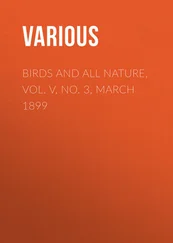
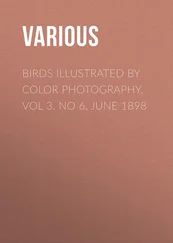
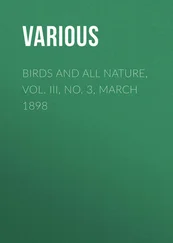
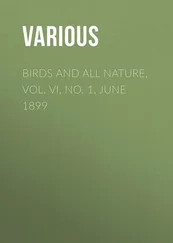
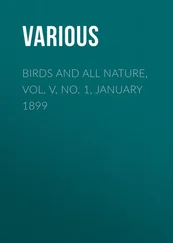

![Various - Birds Illustrated by Color Photography [January, 1898]](/books/746296/various-birds-illustrated-by-color-photography-ja-thumb.webp)

![Various - Birds Illustrated by Color Photography [February, 1898]](/books/746443/various-birds-illustrated-by-color-photography-fe-thumb.webp)